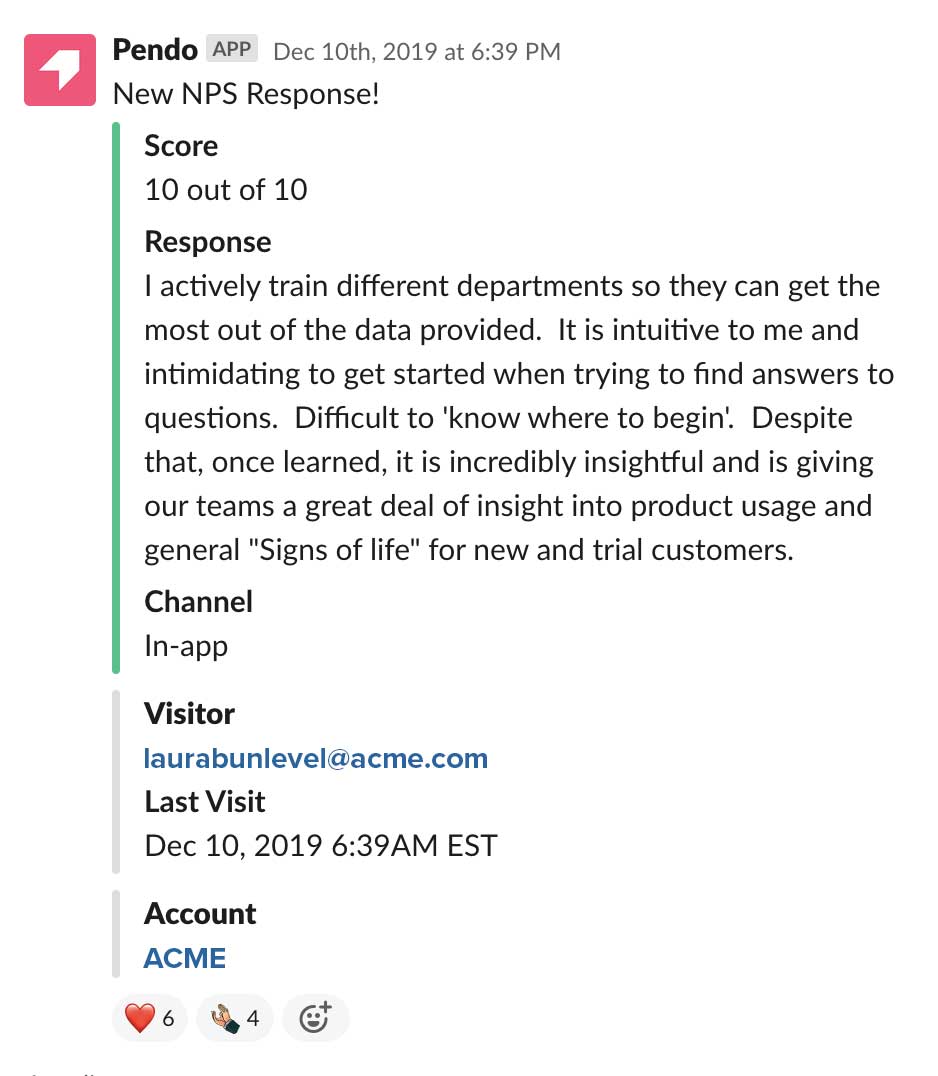When I started at Pendo as a customer success manager (CSM) in 2016, we had one product manager (if you didn’t count our CEO, Todd). It was easy to sit with or message our product manager to explain a customer issue, and this accessibility led to many of our product’s current features.
In reality, most teams don’t have this luxury of accessibility — and as we’ve grown to a team of 28 CSMs and nearly 10 product managers, our methods of working together have evolved, too. We’ve matured in our process and instead of doing what the loudest customer (or CSM) says, we are much more data-driven in our approach. Below, I’ve outlined four ways customer success and product teams can work together to create a best-in-class product experience, while still scaling effectively.
1. Gather usage data to understand how customers are (and aren’t) using the product
In my past experience, the only way product teams knew what customers did in the product was by asking developers or the CSMs. And although the CSMs on my team knew a lot, this information was purely anecdotal — and relied on customers actually sharing what they were doing.

So, my first piece of advice is to gather customer usage data. We use Pendo for this, but I’d advocate for any tool that gives your teams visibility into what users are doing in your product. Having this data allows for more effective collaboration between the customer success and product teams, and our conversations have changed from “what are people using?” to “how can we make this better?”

For example, our success team looked at customers who recently renewed their contracts and identified the top features used. One of these features was building segments, which, at the time, was somewhat hidden in the UI. With the insight that this was a top feature for customers who renewed, the product team acted on the data. They gave segments its own page in the product, and our UX team created guides to point out the “new feature” and help increase adoption. With this UI change, we saw segments usage and our renewal rates increase — a win-win for both customer success and product.
2. Monitor and incorporate customer feedback into the product
Customer feedback is something virtually everyone in your company should care about, but especially the product and customer success organizations. That being said, it’s crucial to gather and analyze customer feedback in a way that ensures neither team is blocking the other. This can be as simple as a poll within the product, or as robust as a full-fledged product feedback management system (like our newest product, Pendo Feedback). But regardless of how simple or complex, having a process is key.
At Pendo, we rely on in-app surveys to target users who have interacted with a new feature and ask them to rate how helpful the feature is on a scale from one to five. The best part? This data goes directly to the product team so they can incorporate relevant feedback into the product without relying on CSMs to ask each customer individually. Using Feedback also gives CSMs visibility into every request (broken down by customer and end-user) as well as its current status. CSMs can also share the most current roadmap with customers, where they can see the status of their request and if (and when) it will be built.
By incorporating customer feedback directly into the product, CSMs no longer have to wait on a product manager to share a slide with the roadmap and vice versa — PMs no longer have to wait on a CSM for feedback on a new feature launch.
3. Prioritize successful in-app onboarding
A common goal between customer success and product is to successfully onboard new customers to help prevent churn. And while this is a simple concept, it can be rather difficult to do effectively. In my opinion, the best place to start is by identifying your product’s “sticky” features — the stickier the feature, the more value the customer gets, and the more likely they are to renew their contract. In the example above above where the success team identified features used by customers who renewed, those became our sticky features, and we worked with the product team to create an onboarding experience to support adoption.
This started with very tactical “how-to” guides in the product:

After analyzing the data, it was clear that although these guides explained how to use a feature, customers still needed CSM assistance to apply these skills to their own use-cases. So, the next iteration of the guides let users pick their onboarding journey to accomplish what they purchased Pendo for.

This helped our team scale so that new users didn’t have to rely on a CSM to get value out of Pendo right away, and it was built into the product! We’re still uncovering additional ways to improve our onboarding experience, and with these new in-app guides, we have data that empowers our product and CS teams to work together to make the process even better in the future.
4. Use NPS to foster cross-functional collaboration
NPS helps our product and CS teams work together in two key ways. It’s a barometer of customer sentiment from both a product and customer service standpoint, and the results that are automatically pushed to our slack channel create a forum for cross-functional collaboration.

Whether it’s a promoter, passive, or detractor, every single NPS response is seen and read by multiple people. This enables team members to work together and, and more importantly, take action. For example, above is a poll response from a promoter that includes qualitative feedback. After seeing this, the product team was interested in learning more about this customer’s experience, and the CSM immediately offered to schedule a call.
Since I’ve been at Pendo, I can’t imagine being on a customer success team that doesn’t work closely with the product team. I know this can be a luxury, but I hope this post has given you a few tools to use in your day-to-day to help create this alignment. Whether it’s implementing a product usage tool or leveraging a cross-functional slack channel for discussion (or both!), the goal is to provide a better product experience — something that product and CS can always agree on.
